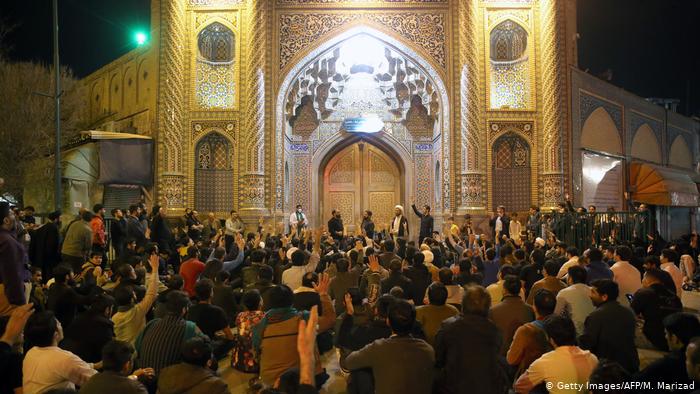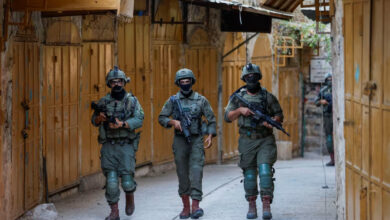
The Iranian government’s handling of the COVID-19 health crisis is contradictory, as the statements of the mullahs are fueled by religion, but their decisions are often pragmatic. This is unsettling to many believers.
Over 85,900 people have so far been infected and almost 5,400 have died of COVID-19 in Iran, according to Johns Hopkins University, keeping the country among the top 10 nations most affected by the coronavirus pandemic.
Last week, a warning issued by Iran’s Science Ministry triggered further concerns: If isolation measures were not implemented, up to 75 percent of Iranians could become infected with coronavirus, resulting in the death of up to 30,000 people. However, if effective measures were implemented, the number of projected deaths could be reduced by up to 6,000.
For weeks, the state and the people have been trying to contain the spread of the virus. Most of those efforts have been carried out using medical backing, but religion also played a part in preventive efforts, especially during the first weeks.
The country’s Supreme Leader Ayatollah Ali Khamenei declared in his sermon on the Iranian New Year, on March 22, that “human enemies” as well as djinn or”evil spirits” were responsible for the outbreak of the pandemic. “We have the forces of djinn and of humans working together,” he told the nation.
Pragmatic measures
Khameini’s statements notwithstanding, the government then took pragmatic considerations into account when implementing measures against the virus, and did so with determination, paying little attention to the religious sensitivities of its citizens.
On March 16, authorities announced that they would close the shrine of the eighth Imam Reza in the city of Mashhad, and that of his sister, Fatimah bint Musa, in the holy pilgrimage city of Qom, in order to curb the spread of the disease. Qom was one of the first places where the epidemic broke out in Iran and is still one of the country’s epicenters of the virus today. Several clergymen were also infected there.
Shortly after the announcement, angry demonstrators gathered in front of the two sanctuaries and tried to break through the gates leading to the shrines. Videos of the demonstrations quickly spread across social media.
The actions of these fanatics, who are a small minority of Iranians, were immediately met with criticism. The attacks were the epitome of “holy ignorance,” said moderate MP Ahmad Mazani, who himself is active in clerical circles.
Distinction between science and religion
The measures initially gave the impression that religion was being written off, Gul Jammas, a political analyst and TV journalist in Tehran, said. Most believers would have been reluctant to accept temporary bans on visits to religious sites, said Jammas.
“These sites are considered spiritual and physical protectors against disease, not places where it is spread,” he said, adding that the decision to close them was not an easy one to make.
However, most Iranians are moderate Muslims. “They understand that religion and science are different spheres. Therefore, from their point of view, the two do not necessarily contradict each other. They can coexist. How we can keep ourselves mentally and physically healthy should be clarified by both,” Jammas said.
Iran expert Azadeh Zamirirad from the German Institute for International and Security Affairs (SWP) sees things differently. The coronavirus crisis puts the theocratic state in an unusual and awkward position, Zamirirad wrote in a piece published on the SWP website. He pointed out that the state had to not only suspend religious rituals that are essential to its political self-image, but also actively discourage believers from practicing those rituals.
In a crisis, the government is putting religion on hold, with the support of the supreme leader, the highest religious authority in the state, wrote Zamirirad.
Such a decision has a far-reaching effect on the public. “The closure of shrines that for centuries were considered places of immunity and healing is tantamount to demystifying Shia beliefs,” Zamirirad said.
To mitigate the psychological shock that the closure of such holy places resulted in, and to convince the public to do everything possible to avoid infection, the government had to resort to an extraordinary explanation, said Jammas.
“The leadership declared that this is not a common virus. It could also be a biological weapon spread by international imperialists and hegemonists — meaning the United States — to attack Iran and China. As a result, most people took the government’s instructions more seriously than before,” said Jammas.
A boost for secularism?
For months, the government has been facing a strong headwind. Angered by the effects of the economic crisis, many demonstrators initially questioned the growth that the government had been promoting in the fall.
After the accidental shooting down of a Ukrainian passenger plane in early January, the government came under intense political pressure due to its sluggish communication strategy. Against the backdrop of the coronavirus crisis, the idea of secularism is now gaining new momentum, wrote Zamirirad.
A separation of the political and religious spheres is a fundamental contradiction to the Islamic Republic’s concept of order, which categorically rejects secular aspirations.
“However, the current crisis inevitably renews the question of the relationship between religion and state — an issue which Iranian philosophers, sociologists and clergy have been concerned with since before the founding of the Islamic Republic,” said Zamirirad.
Despite a new wave of secularism, many Iranians continue to see religion as protection against the virus, said Jammas. So they practice Islamic cleanliness rituals and pray more often than usual, to help them survive the crisis both physically and mentally. People have also adhered to certain behavior patterns during the pandemic, which can be traced back to the life of Mohammed, the founder of Islam.
“All of this has helped people, especially the faithful, to work more effectively against infection,” said Jammas.
___
By Kersten Knipp
Image: Angry demonstrators gathered in front of the two sanctuaries in Qom and tried to break through the gates leading to the shrines. (Getty Images/AFP/M. Marizad)




